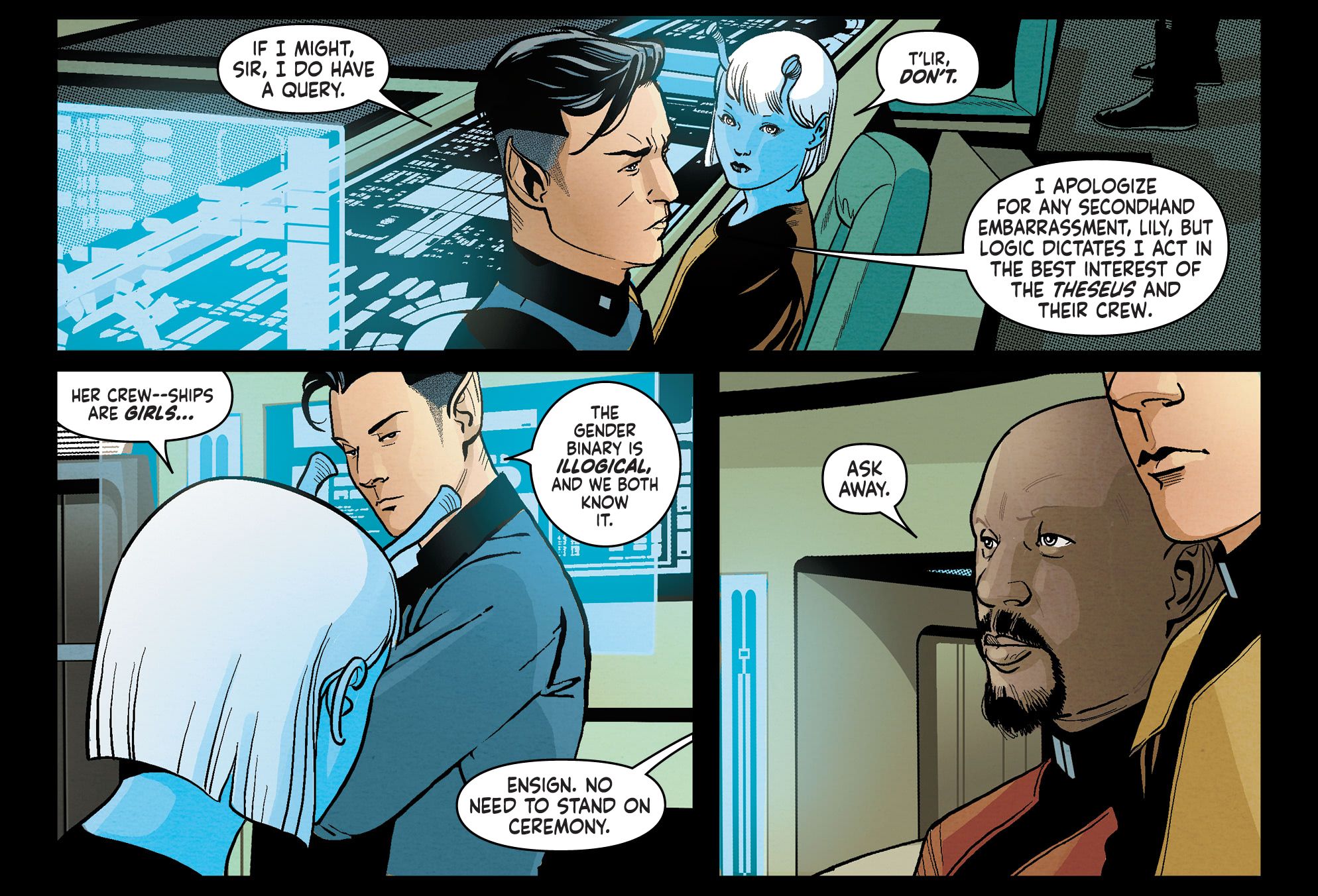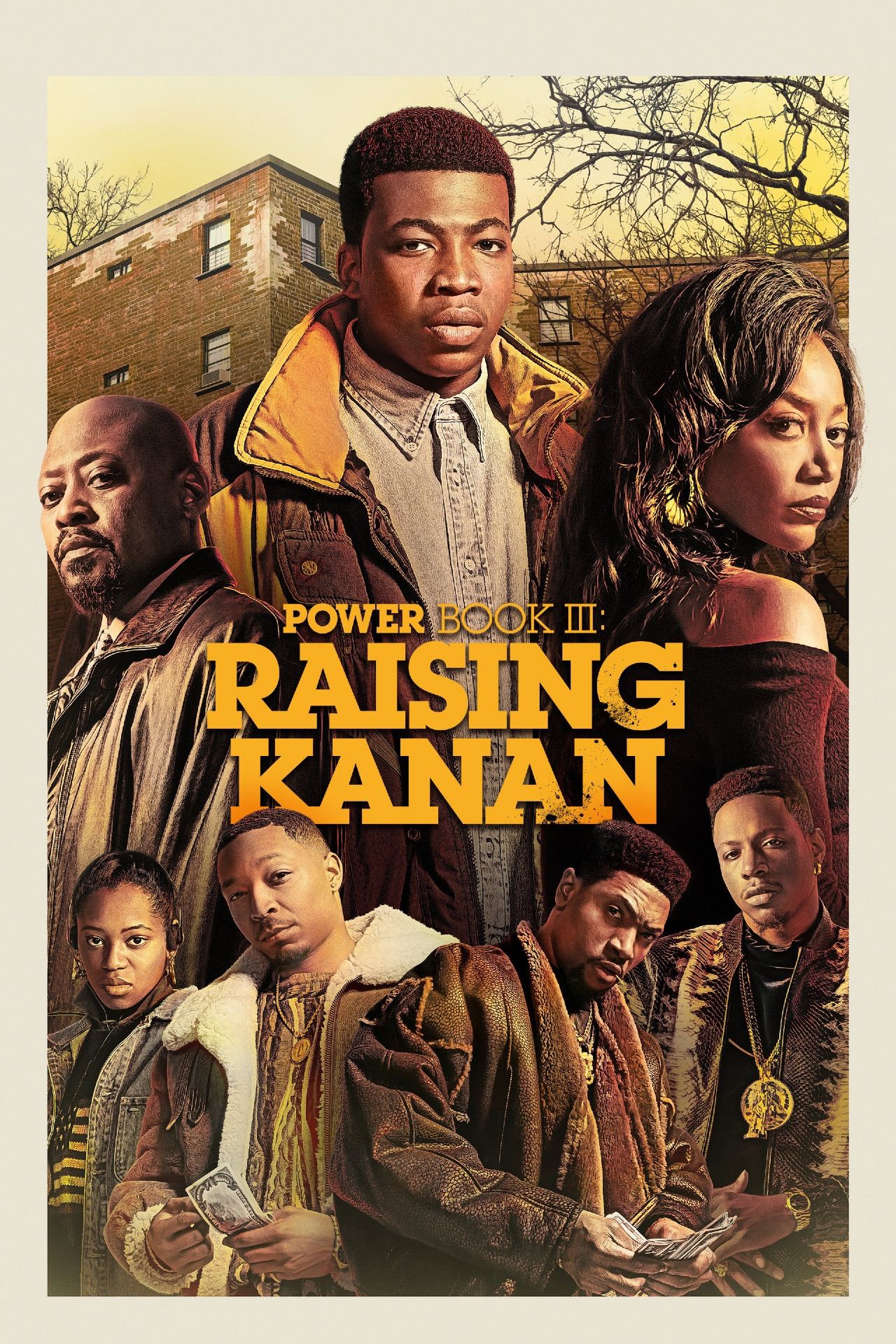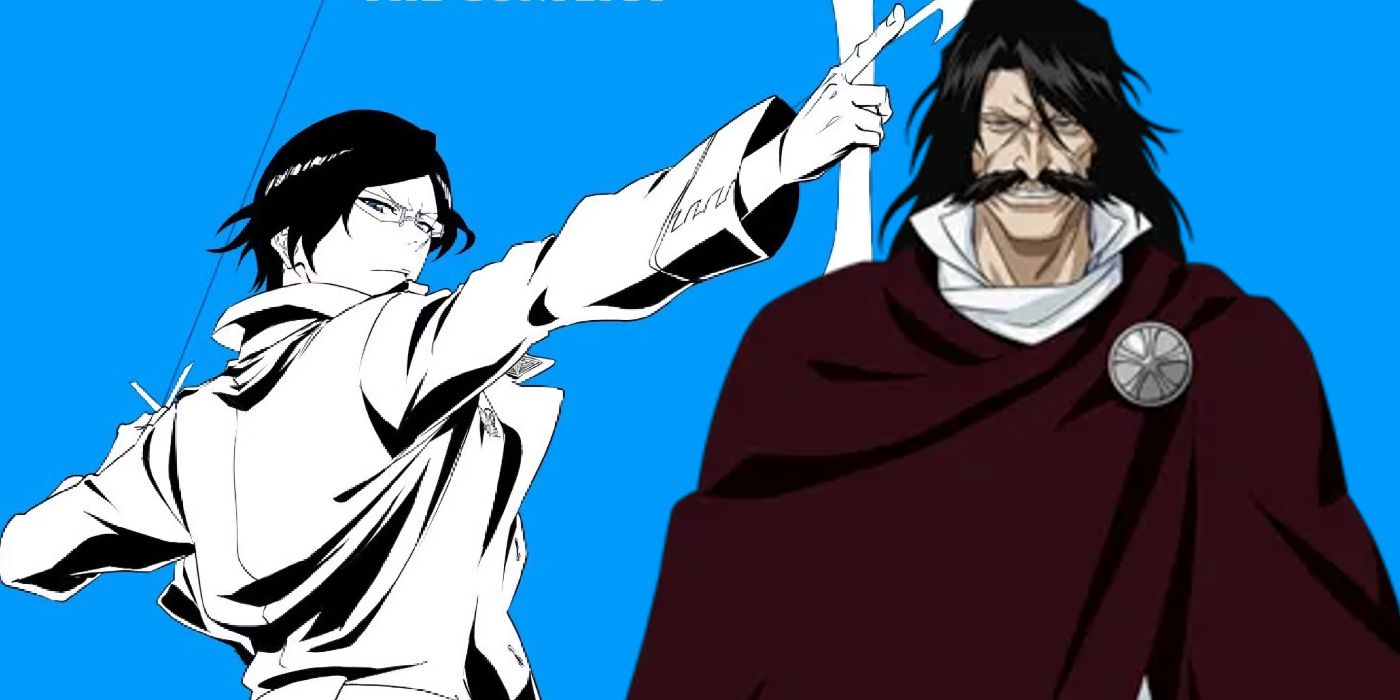There is a tenement of Vulcan philosophy that states “Infinite diversity in infinite combinations,” an idea that celebrates the vast array of possible variables in the universe of Star Trek. The idea is so prevalent that the Vulcans have even taken its symbol as their flag, and the latest Star Trek comic series from IDW Publishing hints that this philosophical underpinning may also apply to the idea of gender and sexuality.
Star Trek’s record on gender and sexual diversity has never been as good as its track record on ethnic and cultural diversity. In the beginning its utopian vision of inclusion did not really extend to members of the LGBTQ+ community. Then in The Next Generation, the franchise gave a few allegories for queer experiences, such as in episodes like “The Host” and “The Outcast.” Following that, Deep Space Nine’s Jadzia and Ezri Dax could arguably be seen as some of Star Trek’s first gender-fluid characters, though they were not always handled well, and the franchise faulted in places like DS9’s “Profit and Lace.” In the twenty-first century Star Trek creators have redoubled their efforts of LGBTQ+ inclusion, most notably on Discovery with characters like Adira, and on Strange New Worlds with the character of Captain Angel.
Vulcans Don’t Have Set Rules When It Comes To Gender

There has been evidence to suggest that Vulcan society in general may not place any stock in the gender binary. This is supported by their naming traditions, as set forth by Gene Rodenberry and expanded upon over the years. Vulcan male names are single words, typically starting with “S” and ending in “K,” Spock, Sarek, Sybok, etc. Female names are generally separated and start with “T,” T’Paal, T’Pan, T’Pau, etc. However, those are not hard and fast rules as Lt. Saavik was a female-presenting Vulcan, and a student of Surak presented as male but was named T’Klass. By these rules T’Lir has a more feminine name despite having a male appearance. Add to this is the fact that it has been suggested more than once over the years that humans and other species can’t even pronounce Vulcans’ actual names, which may suggest that their gendered names are chosen by individual Vulcans for the convenience of other species.
In context, this is a result of different writers and creators playing with naming conventions over six decades of the franchise’s existence. But in canon it could be used to suggest that Star Trek‘s logical Vulcans —with their typical haircuts and similar clothing— don’t actually have set rules for gender conformity. In fact, the reason this subject may have never come up at all among previous interactions with Vulcans is because the idea of adhering to a gender binary is so illogical that it doesn’t even bear mentioning.
On Earth, and in our world, there are some who would argue that there is a strict gender binary of male and female, despite both cultural and scientific evidence to the contrary. However, that does not seem true on the planet Vulcan. T’Lir argues casually that the gender binary itself is illogical, and by extension suggests that it is a concept that Vulcans collectively reject on a conceptual level. If this is true, then this Vulcan philosophy would be the perfect embodiment of Star Trek‘s idea of infinite diversity in infinite combinations.



